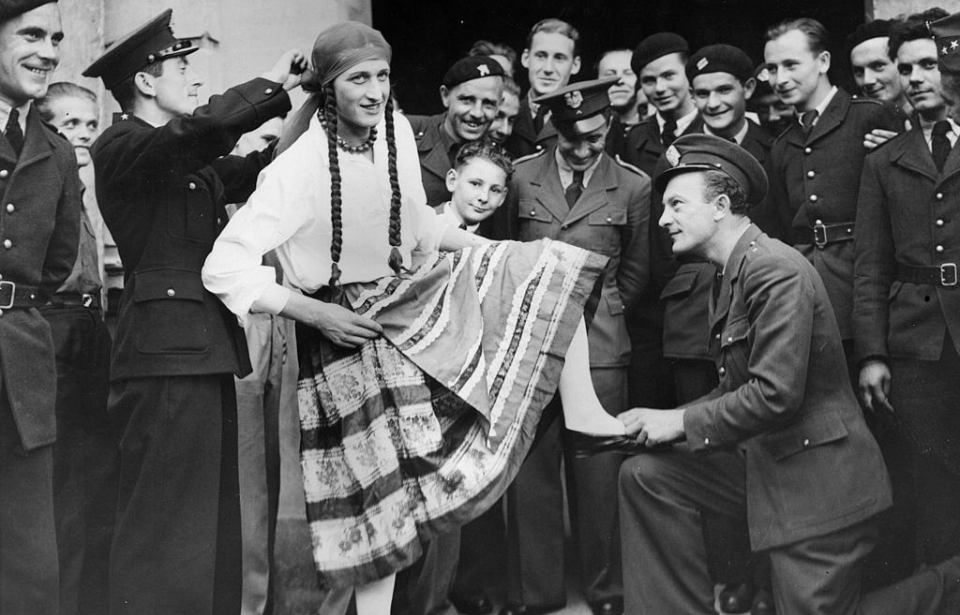Ask any commander of the Second World War and they’ll agree it was incredibly important to keep up troop morale. This was accomplished in many ways, one of which was acts put on by men that often included – in these male-saturated environments – soldiers dressing as women. These drag performances were shown to be immensely important during World War II, as they decreased stress and greatly boosted morale.
Typically, these shows were well-received, which might seem strange, given the lack of tolerance for these acts outside of wartime. However, propaganda surrounding them reframed World War II-era drag as “normal male soldiers doing their duty to entertain their peers and promote good morale amongst the troops.”
These performances could be split into three types: comedy routines, including British pantomime; impersonations of female stars; and genuinely skilled singers and dancers.
In order to put on these shows, it was originally necessary for men to take on these roles, as there simply weren’t many women serving. This evidently changed later in the conflict, as more women found themselves on the frontlines, yet it was largely still undertaken by men. In fact, in the United States, women were outrightly banned from acting in soldier shows. They did, however, put on workshops to show the men how to do their makeup and costumes.
Given the popularity of these drag performances during World War II, it’s no wonder that many fantastic photos emerged. The above photo was taken at a Royal Air Force (RAF) base in the west of England on August 12, 1940. It shows a Polish airman wearing a traditional national costume before performing in a male voice choir that was put together to entertain the airmen. As it turned out, they were quite good and ended up putting on shows for the public, as well.
Some of the best-known photos of soldiers in drag were taken of men manning the Royal Artillery Coastal Defence Battery at Shornemead Fort. In the midst of rehearsals, while donning dresses, stockings and makeup, they were warned of incoming Luftwaffe bombers flying in over the English Channel. With no time to change, they grabbed their helmets, strapped ammunition around their waists and ran to man their anti-aircraft guns.
The event was captured by John Topham, a photographer with RAF Intelligence who happened to be visiting. The images were kept secret, as the Ministry of Information was concerned German propaganda officials would use them to show that the British weren’t strong and masculine soldiers.
This wasn’t the only objection to drag performances during World War II, as some officials heavily disapproved of these types of shows. However, it didn’t stop them from happening. They were considered essential for morale, to the point that even Allied prisoners of war (POWs) went to great lengths to produce them, the most famous of which was the group from Stalag 383, who turned a barn into an auditorium called the “Ofladium.”
More from us: Casualties of Dunkirk – Mother Laying Flowers At Her Son’s Grave
Their dresses were painstakingly made from hundreds of handkerchiefs sewn together, and they got other props and materials from trading their Red Cross parcels with the prison guards.
